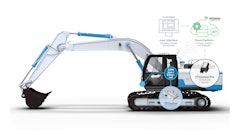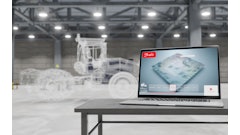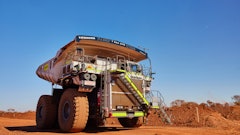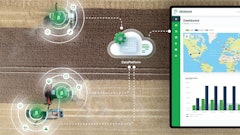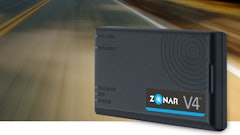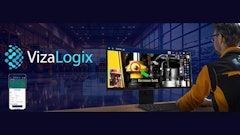
Cloud computing has changed the future of information technology (IT) as businesses all over the world are leveraging the power of the Internet to store and distribute data online. The benefits of the cloud are numerous and OEMs can take advantage of this trend as a key value-add in the off-road transportation market.
Gartner Inc. defines cloud computing as "a style of computing where massively scalable IT-related capabilities are provided 'as a service' using Internet technologies to multiple external customers." A February 2011 report by International Data Corp. (read more at www.oemoffhighway.com/10612655) states that the services and distribution sector – which includes transportation – contributes the largest share of U.S. public IT cloud services revenue. Currently a $3 billion market, IDC estimates the services and distribution sector’s public IT cloud market will more than double to $8.5 billion by 2014.
Early adopters in the transportation industry are using cloud computing today, and the data shows the market is poised for fast growth due to the cloud’s many benefits.
Benefits of the cloud: Simplifying the dashboard
The key value of cloud computing in the transportation industry lies in the ability to develop a mobile asset that can be used as a services gateway. By choosing the right software framework and leveraging current cloud technology, OEMs can use the cloud to connect all of the mobile asset’s service offerings, simplifying the system architecture.
Transportation agencies collect data; then, OEMs and customers manage data for the different business units that include everything from operations to accounting. In the past, this has been a cumbersome process that takes time to pull the multiple databases together.
When all of the data points are stored in the cloud, the various measurements come together into one useful framework to provide dashboards that are available to any authorized user at any time and in any place. Decoupling the data into the cloud presents the information easily and cost-effectively using standard IT tooling to the customer’s back-end office applications – accounting, operations, management and others. Plus, the cloud allows the OEM to develop dashboards for alarms and alerts or the ability to send the data to smartphones or other devices.
This concept goes beyond simple data gathering. A device cloud solution breaks the deployment of multiple solutions designed separately from one another into a service architecture that makes all data available for the business enterprise regardless of the data source. The OEM and the customer can customize their own unique dashboard and access the data they need.
For the OEM, monitoring engine diagnostics and system performance on the back-end allows them to better serve customers by efficiently evaluating duty cycles and system maintenance.
The Device Cloud
It can take months or even years for OEMs to plan, procure and deploy IT infrastructure to connect embedded transportation devices to a network and make use of valuable the data. Machine-to-machine communication solutions can be divided into four fundamental building blocks, as shown in Figure 2.
First, OEMs must select and integrate sensors and edge device hardware while considering factors such as computing platform, interface, power supply and housing options.
Next, developing the device firmware includes the operating system, drivers, networking, application and a user interface. The integrator must then figure out how to connect the system to the business application via a dedicated communication infrastructure, which includes a connectivity broker, infrastructure, application, database and user interface.
Device-to-cloud solutions, on the other hand, simplify the process to reduce the time to market. By connecting transportation devices through the cloud, OEMs deliver valuable data between distributed devices and business applications using standard practices and commonly used methodologies.
The Device Cloud is a term coined by Eurotech (Figure 3) to describe how organizations bring data from a device to business applications with an integrated solution to turn bits of data into valuable and actionable information. Compared to the conventional approach shown in Figure 2, the device cloud in Figure 3 takes care of the entire communication infrastructure instantly. The Device Cloud makes available the device data in the cloud, providing organizations access to that data in real-time through standard methodologies while also archiving the data in a secure redundant manner for easy use with analytic applications.
The Device Cloud is also scalable, secure and at times more cost-effective than a traditional infrastructure for OEMs in the transportation industry. To build an equivalent system with the same redundancy, scalability, tooling and security takes a large capital investment costing time to market and increased risk, while at the same time increasing ongoing maintenance. The Device Cloud offers lower investment costs and risk.
Building blocks for a device-to-cloud solution
If an OEM decides to collect and store data from distributed devices in the cloud, there are important considerations during the product development cycle that can make connecting to the cloud simpler. While the hardware and operating system are important building blocks of the device, an ideal device-to-cloud solution also includes an efficient interconnect protocol and application framework.
Interconnect protocol
A variety of protocols connect embedded devices, such as HTTP or SOAP. Some of the drawbacks associated with these options include thousands of bytes sent as a header for the message, rigid formats and point-to-point communication. HTTP and SOAP provide access to a single embedded device, and some network topologies cannot handle the bandwidth required as it builds up with hundreds of embedded devices. Making efficient use of bandwidth is also a cost-saving measure since some networks charge by the byte of data.
IBM and Eurotech developed the Message Queuing Telemetry Transport (MQTT) protocol 10 years ago. As described at www.mqtt.org, the MQTT protocol enables a publish-and-subscribe messaging model for connections with remote locations where a small code footprint is required or network bandwidth is at a premium.
With a single publisher and many subscribers, engineers send information from a single point to many devices interested in receiving the information. Embedded devices can utilize the MQTT protocol to collect data from multiple devices while using limited bandwidth and providing the information to many subscribers.
Application framework
In addition to a lightweight and flexible interconnect protocol, device-to-cloud solutions need a device application framework built to ensure connecting to the cloud and adding the business logic is a simple, reusable and effective part of the final product development.
In most cases this application framework includes functionality such as:
- Device management (OS updates, application updates, configuration management)
- Application abstraction (running multiple applications or plug-ins in the same environment)
- Application log management (Dynamic log level, Log file rotates)
- Application messaging infrastructure
- Application event infrastructure
- Application module management (Start/Stop/Unload/Load)
- Runtime statistics and meta data
- Configuration management
- Version management
Fortunately, the open source community has provided an application framework that performs these functions and more. The specification to this framework has been provided by the OSGi Alliance.
The OSGi framework can run on any Java platform, and OSGi technology adopters benefit from improved time-to-market and reduced development costs because the technology allows the integration of pre-built and pre-tested component subsystems.
Choosing a cloud service
OEMs can connect to the cloud over their own IT infrastructure, interface with public cloud computing companies or work with a third-party to deploy a hybrid solution of private and public cloud capabilities to connect a device. OEMs should choose a type of cloud-based service depending on the end application and business logic that will be added to the solution, as well as their own business processes and in-house IT skill sets.
The ideal device cloud solution processes data coming from any device through a cloud computing solution that offers high availability, scalability and complete data security. By leveraging end-to-end solutions now becoming available in the embedded industry, customers can deploy their embedded devices and enable actionable data, immediately connect to the business enterprise without the need to create provisions and maintain a costly IT infrastructure.
Today, OEMs can look at the consumer market as a model for what clients want from cloud technology. Consider the tablet industry, where each device has a framework (Android, iPad) and customers can load new functionalities on their device at any time.
Transportation customers also want to be able to have a flexible framework upon which they can add to the knowledge base with new applications. It is more important to build a mobile asset that can do many things rather than handle just one application. With the cloud, you can develop devices that perform many functions, offer the flexibility to add to those functions in the future and manage those functions simply in the cloud for back-end operations.
By choosing device components and communications technologies that enable cloud services, OEMs can provide their customers with more value while increasing their own monitoring and operational efficiencies.










